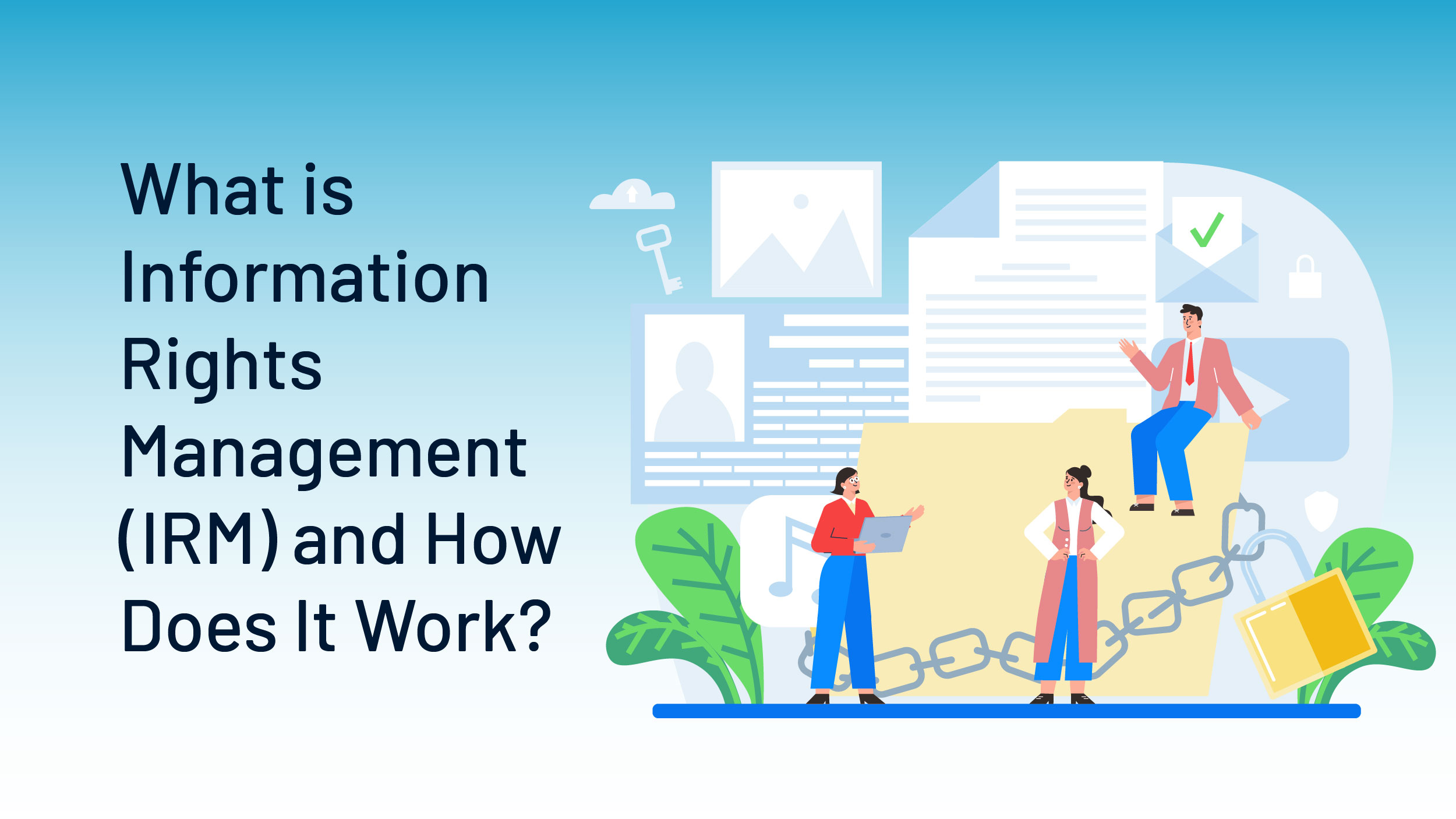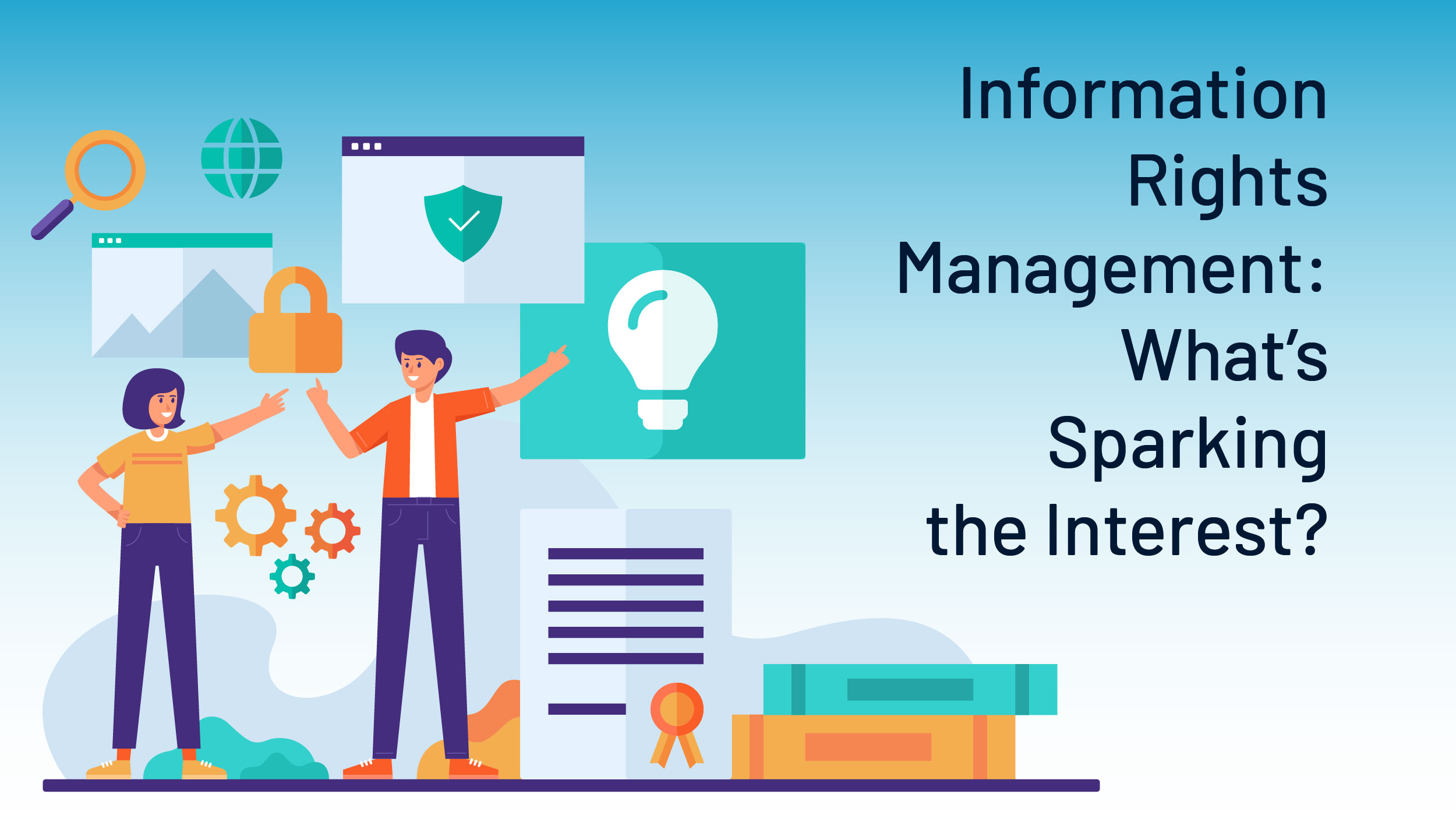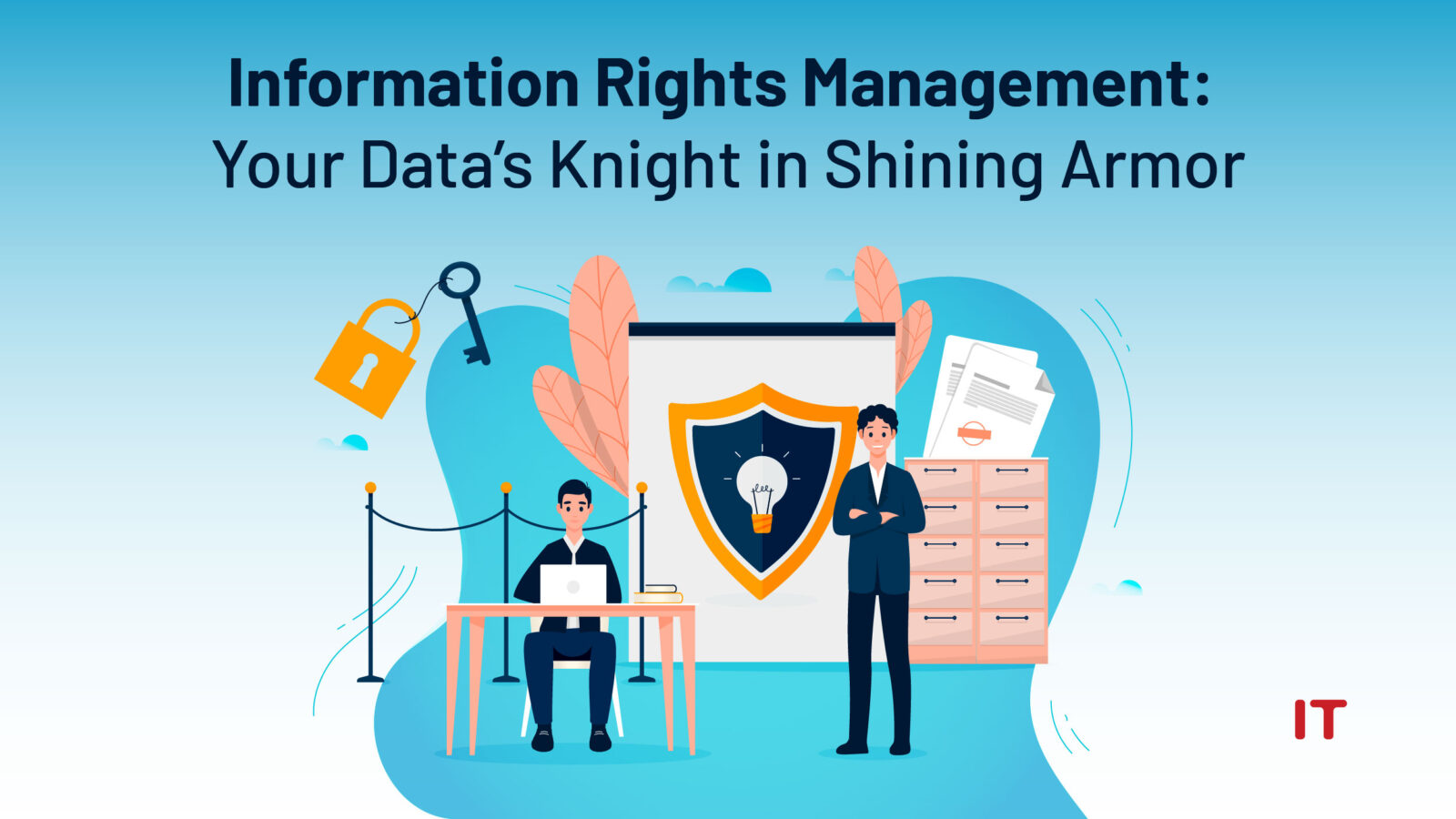Ensuring information security is paramount for every organization due to the potentially disastrous consequences of neglecting this aspect. To effectively safeguard your information, implementing an Information Rights Management (IRM) strategy is a highly recommended approach.
IRM is a comprehensive discipline focused on managing, controlling, and fortifying content against unauthorized access or potential compromise. To gain a deeper understanding of IRM and its various facets, let’s delve into what it encompasses.
What is Information Rights Management (IRM) and How Does It Work?
 A type of document security, IRM employs encryption and permissions management to safeguard sensitive data. IRM, a subset of digital rights management (DRM), focuses on document, PDF, and other file security.
A type of document security, IRM employs encryption and permissions management to safeguard sensitive data. IRM, a subset of digital rights management (DRM), focuses on document, PDF, and other file security.
Having defined IRM, let’s now discuss how it precisely operates.
Information rights management is an integral component of comprehensive digital asset management (DAM) systems and processes, responsible for organizing, storing, and retrieving rich media digital content.
In practice, rights management systems encrypt sensitive files and private data sources to prevent unauthorized user access. IRM regulations may allow viewing but forbid screenshotting or copying and pasting the content. IRM often translates into precise guidelines that control who can access and use which records.
Authentication is crucial whenever a user requests access to a restricted document. A release license is granted when the credentials of authorized viewers have been verified by a dedicated server. This license may specify restrictions on copying or read-only access. However, as information rights management depends on specialized programs that encapsulate content, installing it comes with expenses and potential security issues. Furthermore, IRM safeguards can be bypassed through techniques such as manual copying, screen captures, or photographing documents.
Differentiating DRM and IRM: A Closer Look
DRM, or Digital Rights Management, is a technology that limits the ability to access and alter protected digital content. Its primary aim is to protect copyrighted material from being copied or distributed without authorization. DRM is widely used in various forms of media, including games, software, CDs, DVDs, and e-books, utilizing encryption and digital watermarking techniques. The Digital Millennium Copyright Act (DMCA) is responsible for enforcing DRM regulations, although its implementation has sparked debates due to concerns about potential negative impacts on user freedom and fair competition.
On the other hand, information rights management is a technology that applies DRM (Digital Rights Management) to personal documents, such as files from Microsoft Office, PDFs, and emails. While DRM is mainly used to protect copyrighted material, IRM focuses on securing extremely sensitive information. For example, hospitals may utilize IRM to ensure the protection of patient records and comply with HIPAA-HITECH regulations. Likewise, businesses employ IRM to safeguard executive communications and prevent the unauthorized disclosure of sensitive information to the media or rival organizations.
HIPAA mandates safeguards for protected health information (PHI) by covered entities and business associates. These safeguards ensure privacy, data integrity, and accessibility.
HIPAA violations, enforced by OCR, can lead to fines ranging from $100 to $50,000 per violation per year. Some settlements exceed $1 million, with the largest being $5.5 million against Advocate Health Care in 2016.
Additionally, criminal charges can be filed for knowingly obtaining or disclosing PHI under false pretenses or for malicious purposes, with penalties including up to 10 years in prison and fines, under the jurisdiction of the U.S. Department of Justice.
Also Read: Oracle Poised to Revolutionize Network and Data Security
Information Rights Management: What’s in it for You?
IRM offers several advantages, with one of the most significant being the prevention of content plagiarism and unauthorized sharing. IRM also enables precise control over content access, its format, and the duration of access by authorized users.
Listed below are some of the main advantages of using IRM.
- Facilitates tracking of information usage and targeted content sharing.
- Ensures secure sharing of sensitive data among partners, customers, or employees.
- Guards against unauthorized use or disclosure of sensitive information.
- Aids in regulatory compliance, including HIPAA and GDPR.
- Boosts productivity by averting document duplication.
Information Rights Management: What’s Sparking the Interest?
 As per the IBM Cost of a Data Breach Report 2021, the global average breach cost surged from $3.86 million to $4.24 million in 2021. This marked the highest average total cost in the 17-year history of the report.
As per the IBM Cost of a Data Breach Report 2021, the global average breach cost surged from $3.86 million to $4.24 million in 2021. This marked the highest average total cost in the 17-year history of the report.
The financial loss resulting from a security breach is just the tip of the iceberg. The harm to an organization’s reputation can be immeasurable. This is why both chief information security officers (CISOs) and chief information officers (CIOs) are deeply concerned about choosing the most effective technological approach to safeguard sensitive data from unauthorized access while also ensuring compliance with regulations.
Information rights management technology can be justified by the necessity to safeguard specific information, like document files and customer records, against unauthorized access. Any organization with a data protection policy can reap the advantages of utilizing IRM.
In the healthcare field, there is a regulation known as the Health Insurance Portability and Accountability Act (HIPAA) that mandates the safeguarding of electronic patient health information. This regulation is implemented alongside various document security measures to guarantee the protection of patient data.
What is an Example of IRM?
Information rights management allows individuals and organizations to control and manage access to digital information or documents. An example of IRM would be a company using IRM software to restrict access to sensitive financial reports to only specific employees or teams within the organization. These authorized individuals would have the rights to view, edit, or share the document, while others would be restricted from accessing or making changes to it. This helps ensure that sensitive information is only accessed and handled by those with proper authorization, adding an extra layer of security to digital documents.
Moreover, online IRM encrypts and restricts file usage, granting access solely to authorized users. It bolsters security, curbing unauthorized sharing, copying, and printing of sensitive data.
Wrapping it Up
Information rights management stands as a critical safeguard in our digital age. Online IRM empowers organizations to securely control, protect, and manage their sensitive digital assets and data access. By providing granular control over access and usage rights, IRM empowers organizations to protect their sensitive data from unauthorized access and potential breaches. It ensures that information remains in the hands of those who need it, and prevents inadvertent leaks or unauthorized modifications.
As businesses increasingly rely on digital platforms and collaborative tools, implementing an IRM solution becomes imperative for safeguarding confidential information. By doing so, organizations can not only bolster their security posture but also foster a culture of trust and compliance in an ever-evolving digital landscape.




































